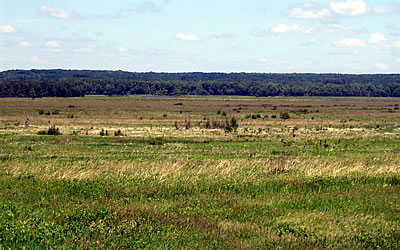Site Description
This property, located in central Wisconsin, is one of the largest wildlife areas in the state. It contains a variety of different habitats, including grasslands, upland shrub, upland deciduous forest, shrub swamp, sedge meadow, marsh, and flowages.
Ornithological Importance
The diversity of habitats supports a variety of bird species. Common loons, American and least bitterns, green herons, and great blue herons, and Wilson’s snipe breed in the wetlands. Shrub and woodland areas support American woodcock, eastern wood-pewee, least flycatcher, Golden-winged warblers, blue-winged warblers, chestnut-sided warbler, black-and-white warbler, and ovenbird. Mead is one of 4 sites that contain core grassland habitat for greater prairie-chicken, and the property supports a significant portion of the remaining population of this state threatened species. Other priority grassland birds found here include Henslow’s sparrow, LeConte’s sparrow, savannah sparrow, bobolink, and eastern meadowlark. Large numbers of waterfowl congregate here in spring and fall, and many migrating shorebirds can be found when drawdowns provide appropriate habitat. Short-eared owls and long-eared owls use the area in winter.

George W. Mead Wildlife Area, photo by Andy Paulios